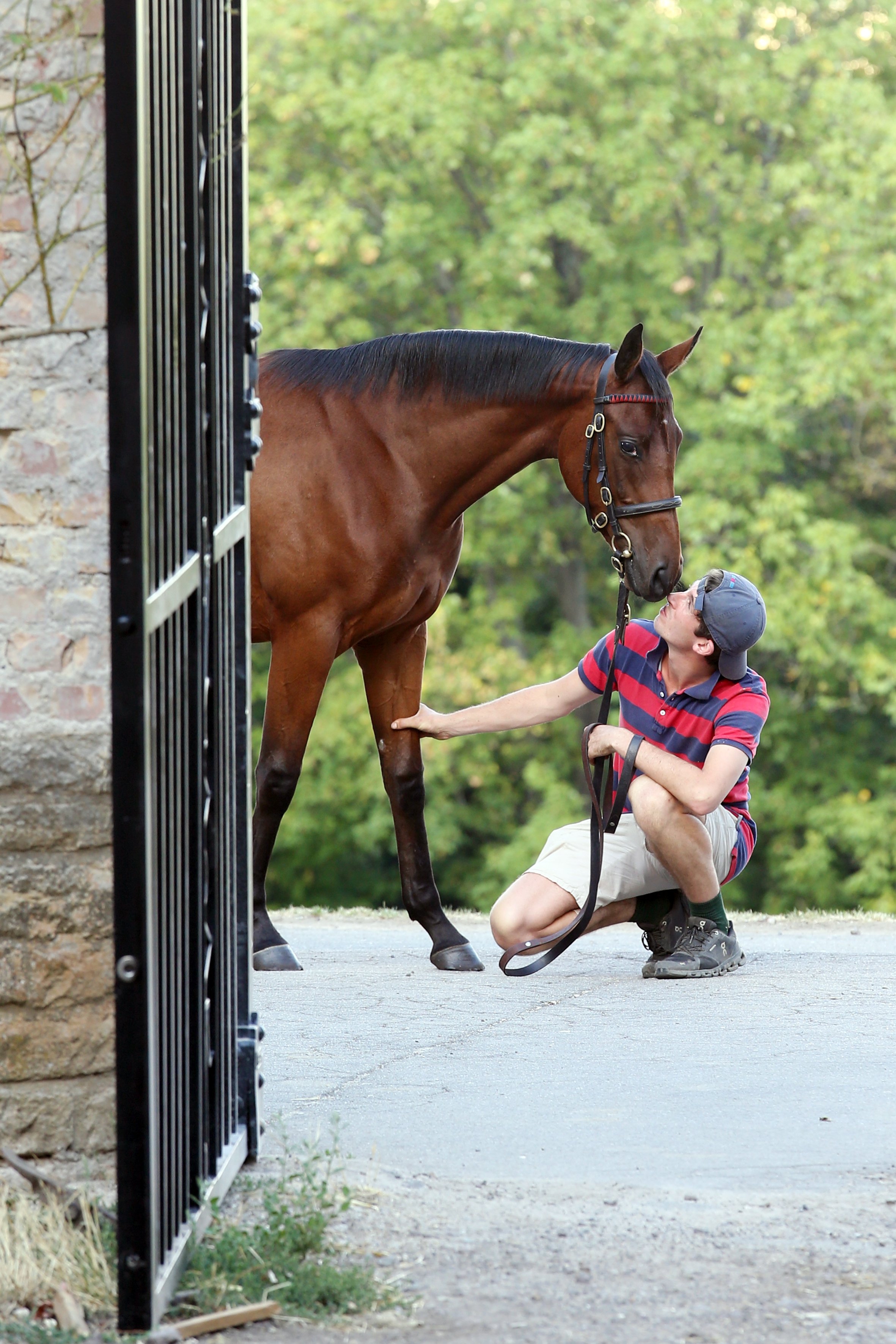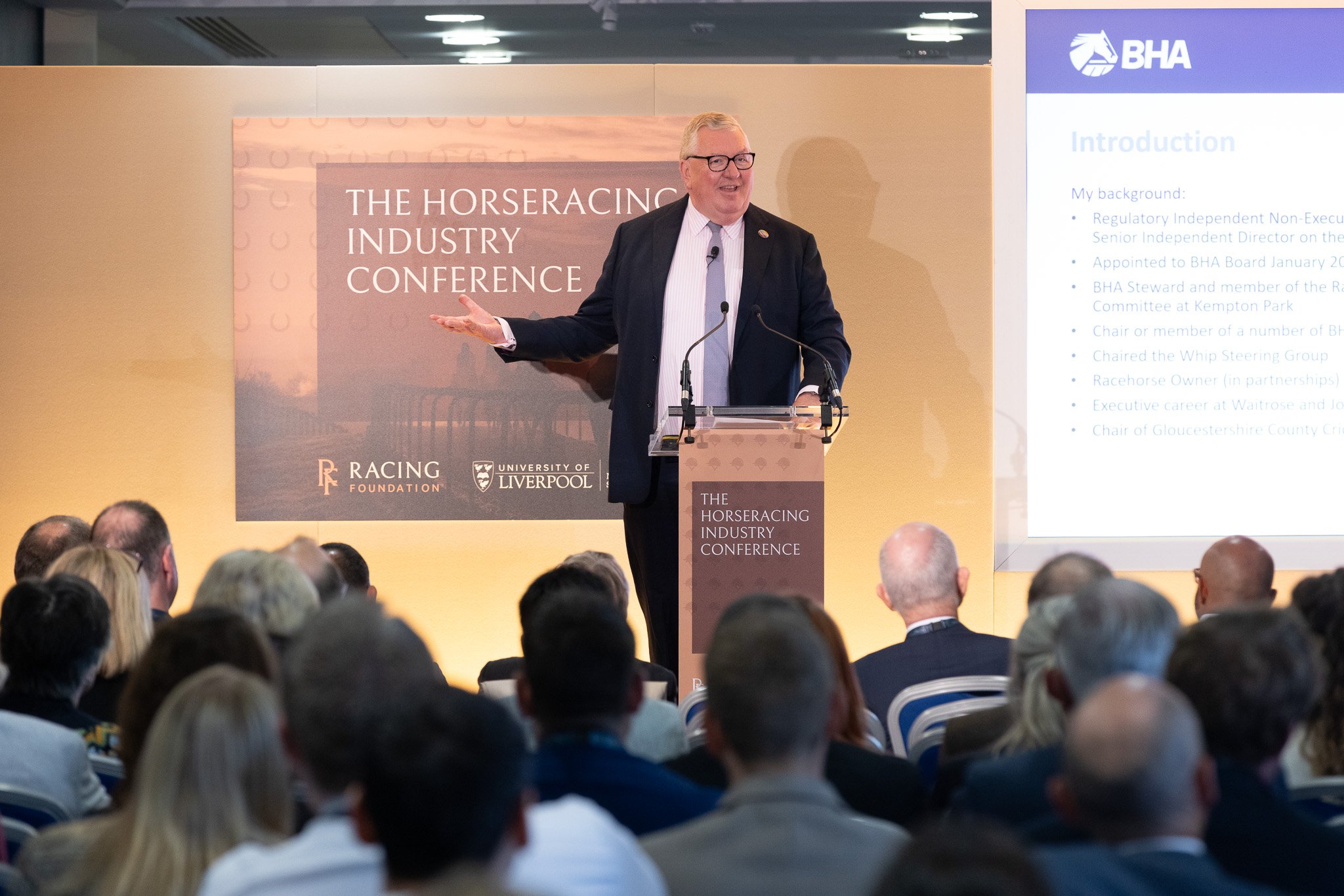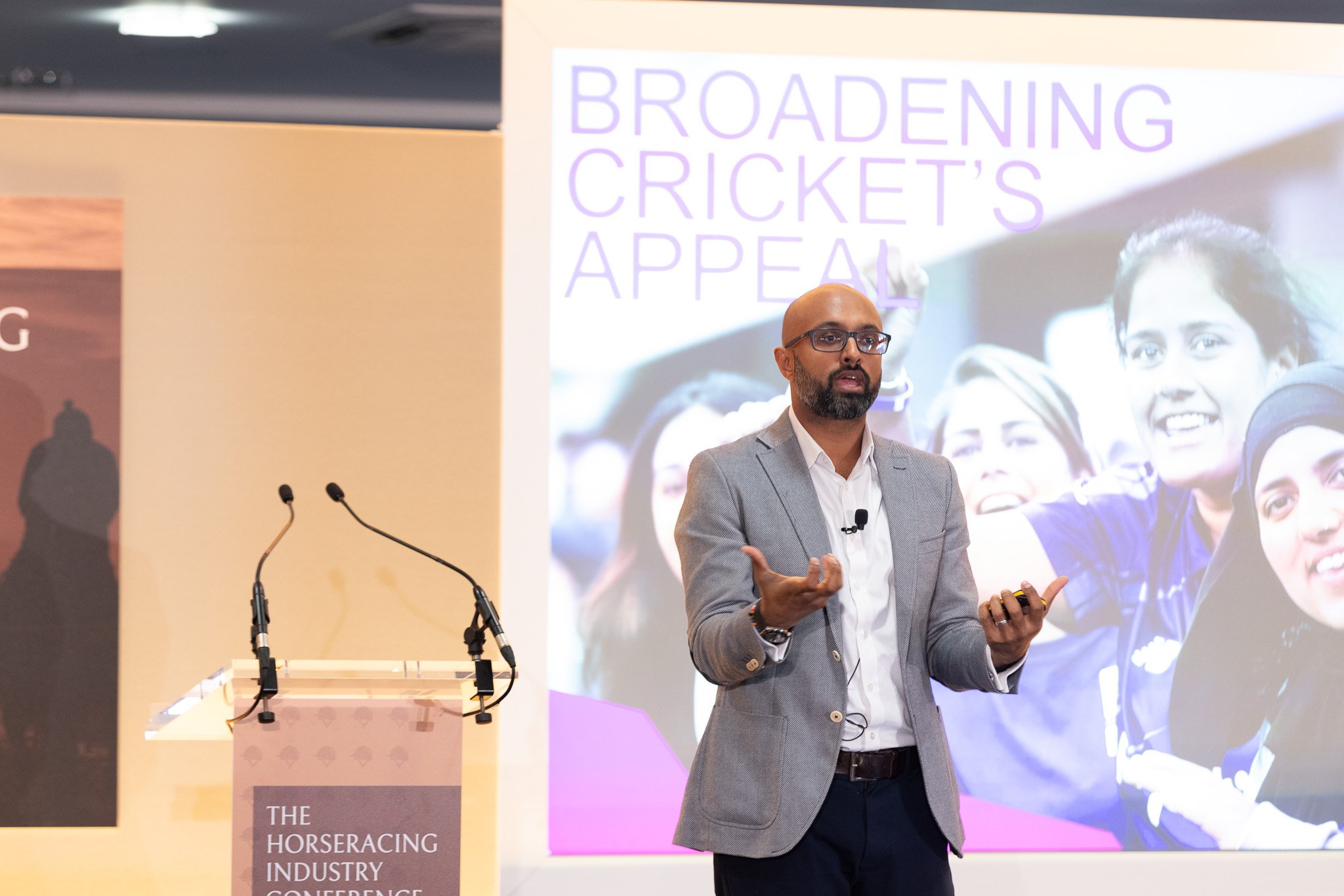How trainers promote best welfare practice across Europe
"Mens sana in corpore sano" - is a well known Italian phrase which translates to “a healthy mind in a healthy body" is a fundamental principle for every athlete, and racehorses are true athletes of the sporting arena. Just like their human counterparts, the performance of a racehorse depends not only on their physical condition but also on their mental well-being. The issue of animal welfare in horse racing is not just a matter of ethics or sensitivity, but the foundation upon which the integrity of the entire sport rests.
The concept of equine welfare extends beyond the mere absence of disease or injury. It concerns the quality of life of the horses, including their daily treatment, living conditions, access to open spaces, appropriate nutrition, and the ability to express natural behaviours. Moreover, it includes ethical training practices that respect the animal's physical limits, avoiding bad training and stress.
In the context of racing, equine welfare is scrutinised not only by industry insiders but also by the public and animal rights activists. Our focus in this section of the article is on the evolution of welfare practices in the leading countries of European horse racing: Great Britain, France, Ireland and Germany.
The goal is to understand not only the current state in terms of equine welfare but also to identify trends and areas for improvement, reflecting on the importance of an ethical and responsible approach to these extraordinary athletes.
GREAT BRITAIN - HORSE WELFARE BOARD (BHA)
The Horse Welfare Board, inclusive of representatives from the BHA, racecourses, and horsemen, unveiled a five-year welfare plan in 2020 to elevate horse welfare in British racing. This plan is dedicated to ensuring a "life well-lived" for racehorses, with a focus on traceability, safety, well-being, alongside initiating the industry's most extensive data project. It targets enhancing health care practices, ensuring lifelong responsibility, reducing injuries, and fostering public trust through transparency and ethical practices. Additionally, the strategy commits to developing a Code of Ethics and advancing veterinary care and injury prevention. Importantly, the implementation team is collaborating with the industry on 26 strategic projects, backed by funding from the Horserace Betting Levy Board (HBLB) since 2019 and a recent £3 million grant from the Racing Foundation, to realise these goals.
In the array of projects undertaken by the Welfare Board to bolster safety and uphold equine welfare standards, there are a few that stand out as being exceptionally cutting-edge, such as the: Thoroughbred Census, Equine Vision Project, Data Partnership.
Thoroughbred Census
The project aims to enhance the traceability of retired thoroughbreds, enabling better support for owners and the adaptation of welfare initiatives by British Racing and Retraining of Racehorses (RoR). It involves a six-month census, in partnership with RoR, collecting detailed information on retired racehorses to improve aftercare and respond quickly to equine disease outbreaks.
Equine Vision Project
“We try to look through the horses’ eyes” - Mike Etherington-Simth
In 2017, the BHA and Racing Foundation funded research into equine vision to enhance hurdle and fence safety. Horses, seeing fewer colours than humans, struggle to distinguish between hues like red, orange, and green. The study assessed the visibility of orange markers on racecourse obstacles against alternative colours, considering how weather conditions affect perception.
Data Partnership
This project seeks to enhance racehorse safety and welfare by analysing risks and factors leading to injuries and fatalities on racecourses and during training in Great Britain. It utilises extensive data on races and training practices, employing advanced statistical models to identify risk factors. The initiative, in collaboration with industry stakeholders, aims to provide evidence that informs decisions and measures to minimise risks, directly contributing to the betterment of racehorse welfare.
FRANCE - FRANCE GALOP
France Galop is deeply committed to promoting high standards of horse welfare, aligning with the 8 principles outlined in the "Charte Pour le Bien-Être Équin". This commitment is evidenced through various initiatives, including the inspection of facilities by France Galop veterinarians for new trainers who have acquired their flat racing licences. These checks, part of the certification process, aim to ensure that the infrastructure is suitable for housing horses. In 2021, a total of 410 training centres were inspected by the veterinarians of the Fédération Nationale des Courses Hippiques. The vets also check for prescribed medications and substances on site, adhering to a “zero tolerance” policy.
IRELAND - THOROUGHBRED WELFARE COUNCIL (HRI)
“They have horse welfare right at the forefront of everything they do and I would say they are doing a very good job” Joseph O’Brien
In 2021, the Irish Thoroughbred Welfare Council was assembled to act as an advisor to the Board of HRI and assist in devising policies on welfare matters. HRI gathered 60 industry participants in a co-design project to create a manual called “Our Industry, Our Standards,” aiming to establish a system where welfare standards are verified and measured. These standards include good feeding, good housing, good health and good well-being. Additionally, the Thoroughbred Council is collaborating with IHRB, Weatherby’s, and the Department of Agriculture to create a traceability system that will ensure every horse always has a known link to the responsible person.
Best-Turned-Out League
To promote and encourage the implementation of good animal care and welfare practices, HRI has introduced the “Best-Turned-Out League,” which aggregates these prizes from across the country into a league table with substantial prizes from six different categories, highlighting the impressive standards maintained across the industry. The primary caregivers, who are often lifelong careerists, are our industry employees.
GERMANY - DEUTSCHER GALOPP
Deutscher Galopp, has notably advanced equine welfare within racing in recent years. Not only has it raised the quality standards of horse care within stables, monitored through surprise veterinary checks, but it has also started to develop an intriguing project that monitors the physical development of racehorses.
Physical Maturity Check for 2-Year-Olds Before Training
Deutscher Galopp has implemented regulations requiring that every horse must pass specific veterinary checks. These checks are designed to ascertain sufficient physical maturity before a horse enters into training. A second assessment is conducted shortly before the horse can start in a race, to confirm its physical fitness for competition.
For this section of the article, we canvassed opinion from a selection of industry professionals for their perspectives on issues related to equine welfare.
Q: What role does horse welfare play in your training practices and what specific measures do you implement to safeguard the physical and mental well-being of the horses?
"The welfare of my horses is central to me; it is the most crucial element for the success of my business” asserts Seamus Mullins, a sentiment unanimously echoed by all interviewees who have long regarded animal welfare as a key factor from the outset of their careers in the racing sector. When delving into the practicalities of ensuring each horse's welfare is honoured, Joseph O'Brien highlights the significance of tailoring care to individual needs. "It's crucial not to generalise, as what satisfies one horse might not suit another," he explains. This underlines the necessity of adapting training and rest schedules to cater to their unique preferences and inclinations, guaranteeing their well-being and happiness.
Luca Cumani, who since retiring from training has remained active within the industry, including a term as a director of the BHA and as a pre-eminent breeder emphasises the importance of observation to understand each horse's psychological capabilities and preferences.
Seamus Mullins discusses the regular turnout of horses in individual paddocks while ensuring they are always in association with other horses. The stables are varied to suit different preferences, emphasising the need for regular updates to training methods and facilities to keep the horses in the best condition possible.
Peter Schiergen, Nastasja Volz-Degel, and Alessandro Botti all share this commitment to horse welfare, implementing daily routines, wellness programs, and training methods tailored to the individual needs and physical aptitudes of each horse. They focus on creating a comfortable environment for the horses, using modern facilities such as solariums, water treadmills, and magnetic blankets for massage, highlighting a collective effort to maintain high welfare standards in the racing industry.
Q: How do you educate your staff or team members about the importance of animal welfare?
"I always said to the riders: the relationship with the horse you ride should be viewed as a partnership, akin to that with your wife or daughter, and should be treated with the same respect and care" Cumani explains with a touch of warmth. The stable staff plays a pivotal role in the implementation of animal welfare, which is why, as the interviewees emphasise, it's crucial to focus on their education and enhance their knowledge to the fullest. "We want our staff to become better horsemen," states Schiergen.
Beyond the training provided internally within their stables, some trainers, like Alessandro Botti, with the support of AFASEC (the Association de Formation et d'Action Sociale des Ecuries de Courses - which roughly translates to Association for Training and Social Action of Racing Stables), have decided to offer courses in equine ethology led by experts brought in from outside. This initiative not only sparked significant interest among their staff but also led to an improved approach to working with horses.
Q: The risk of injuries is an inherent component in all sports, including horse racing. What is your opinion on this statement, and what specific actions do you take to minimise the risks?
"Risks are everywhere, especially in competitive activities, whether involving humans or animals, there's a significant element of risk," are the words of Cumani, which also resonated with others we interviewed.
The consensus is that, unfortunately, injuries are inevitable despite efforts to minimise them through practices and care that respect the physical state of the horse. "We try to minimise the risks by checking every horse before a race and during training, we never push the limit of a horse if he isn't ready enough” underlines Schiergen, “we have to get the message across that we are doing all our best to minimise the risks at all accounts”, adds Mullins.
Q: What role do you believe transparency plays in communicating to the public the importance placed on the welfare of racing horses in daily activities, and how do you ensure that this information is effectively shared with the general public?
“There are fewer and fewer people growing up with animals and in farming, and as a result, this is why we need to show through platforms what we do because things we take for granted, someone who has never been to a racing yard may not realise what happens,” says O'Brien. He adds, “It is important to give people access to behind the scenes, and this is why we try to be quite active on social media and encourage people to come to our yard, so that they realise the amount of passion that staff puts in their daily work.”
Public involvement, to make them part of the daily practices of stable life, is crucial, as our interviewees from various parts of Europe maintain. Thanks to numerous activities promoted by the racing authorities of the interviewees' respective countries, Open Day events allow the public to participate in stable life.
Many trainers, like Seamus Mullins, have noticed a significant increase in participation in recent years, “Ten years ago, participation in the UK was about 100, while in 2023 it was more than 500. Moreover, people who participate often express surprise at how well race horses are treated.” However, all the trainers, like Alessandro Botti affirms, it is necessary to increase content on social media, to give the possibility to everyone, every day and in every part of the world, to participate in the daily life of horses in various stables.
Q: What do you think will be the future trends in horse welfare in Racing in the coming years?
All the trainers interviewed are convinced that the standards of equine welfare in racing are already very high. However, they unanimously believe that social pressure from activists will continue to grow, making it necessary to increase transparency and public engagement. Joseph O'Brien emphasised the importance of education: "What I think really has to be put to the forefront is educating people who are not involved in racing; this will be the biggest challenge."
Given the insights on how Racing Authorities operate in terms of Horse Welfare and the daily interest and commitment of trainers, the trend seems to be very positive and reflects very high standards. It is essential, however, that countries collaborate with each other to inspire one another, further improving equine welfare practices, as Helena Flynn, the British Horse Welfare Board Programme Director emphasises "We love these animals and do our best to ensure they are protected, and thus it would be beneficial if the results of various state projects could contribute to inspiring everyone internationally." Therefore, the issue of equine welfare in racing is a complex mosaic of care, respect, and dedication towards the thoroughbred racehorse. Recognising and acting for their welfare is not just a moral duty but the foundation on which to build a fair, sustainable, and most importantly, animal-respectful racing industry.
What we learnt at the first carbon-neutral horseracing industry conference
Article by Rhianydd Lee-Jones
Delegates from across the racing industry attended the first carbon-neutral Horseracing Industry Conference at York Racecourse on Tuesday, October 24.
Over 250 delegates from across the industry registered for the event: from racecourse representatives to racehorse trainers, funders to charities and racing schools to suppliers. The cross-section of British racing and the wider sporting landscape attendees engaged with keynote talks from specialists and experts from within and outside of the sport.
When developing the agenda for this year’s conference, the Racing Foundation and University of Liverpool Management School did so with the belief that in order to discuss the future of the sport, it was imperative to engage younger audiences and make their voices heard. Each agenda item featured a ‘next generation panellist’ who represented the next generation of racing's fan base and workforce. Complimentary delegate tickets were offered to under 25-year-olds to encourage engagement and debate with the challenges and opportunities discussed at the conference.
Environmental sustainability was embedded into the conference this year not only through its inclusion on the agenda, but by its sustainable practices. The conference used reusable signage, encouraged delegates to travel by train, collected carbon data and used a digital-only brochure. Lanyards made from recycled bottles replaced traditional plastic name badges. A lunch using produce from Yorkshire was served as the Racing Foundation and University of Liverpool Management School addressed all aspects of environmental impact in delivering the event. The carbon used will be offset using an approved scheme.
Senior Independent Director and Chair of the Commercial Committee David Jones kicked off the conference with the keynote address, offering a commercial view of the forthcoming industry strategy and stressing the importance of significant innovation through collaboration.
The Racing Product agenda item commenced with Racing League founder Jeremy Wray discussing the importance of trying new ideas within the sport of racing and calling for more data and more technology to capture the next generation of racing fans. He said that while we haven’t managed to engage millennials or Gen Z with the sport yet, there is hope and time to win them back. Wray cited ITV’s new six-part primetime docuseries, that focuses on jump racing, as crucial to address racing’s “massive existential crisis.”
Vikram Banerjee is Director of Business Operations at the England and Wales Cricket Board. Instrumental in the delivery of cricket’s modernised format ‘The Hundred’, Vikram talked about breaking down perceptions of cricket as elitist and how the ECB broadened cricket’s appeal and engaged families with young children.
‘Equine Breeding: Past, Present and Future’ was the first session after lunch. Vice-Chair and Veterinary Chair of the International Thoroughbred Breeders’ Federation Dr Des Leadon delivered an educational keynote talk on the history of thoroughbred breeding and the integrity of the breed. In keeping with the conference structure of considering the wider sporting landscape, breeding specialists James Crabtree and Fred Barrelet then explored equine breeding techniques in the non-thoroughbred, reflecting on outcomes in other equestrian disciplines.
Ruth Dancer is the Director of White Griffin who delivered the racing industry’s sustainability assessment results and recommendations in 2022. She delivered a keynote talk at this year’s conference. After giving an update and insight into best practice across various industry sectors, Dancer posed the question ‘Where are you in your journey?’ Subsequently encouraging delegates to educate themselves, get started, and talk about what they’re doing and celebrate every single sustainability win.
Football followed Dancer’s talk. Ben Fisher, Environmental Sustainability Officer of the English Football League, talked about the power of sport to engage communities in the area of environmental sustainability, its connection to social aim, and the opportunity to use sustainability to leverage fan buy-in.
The final item of the day was the industry leadership panel. Its aim was to offer all delegates the opportunity to quiz racing’s decision makers in an open forum. Keynote address David Jones was joined by Claire Sheppard (Thoroughbred Breeders’ Association Chief Executive), Charlie Liverton (Chief Executive of the Racehorse Owners Association), Dale Gibson (interim CEO of the Professional Jockeys Association), Jemma Marshall (President of the National Association of Stable staff), Neil Hayward (Chair the Industry People Boar) and David Armstrong (Racecourse Association Chief Executive) joined Rishi Persad onstage to answer questions from the audience. The discussion included data, training and retaining the industry’s workforce and community engagement for racecourses. This session, alongside other select keynote talks, is available to watch online at https://www.racingfoundation.co.uk/conference-2023













